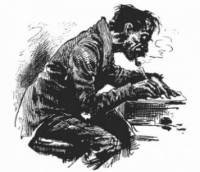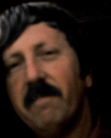What You Can Expect, (And What You Cannot)

As all authors do, I get reviewers who are disappointed to a minor or major extent with my stories. The hard fact is that not everyone has the same tastes. I’m not referring to the objective criticism of grammar, overuse of clichés, or plot holes. There really is no excuse for those and no defending them. What I am referring to is the kind of criticism that comes from matters of taste, things like amount of back story, number of characters, extraneous details, side stories, and overall length of the book. On the last point, it still amazes me to read something like “The book went on for 400 pages.”
Personally, if I enjoy a book, I’m in no hurry to see it end. Nevertheless, in the end, a story either works for a reader or it does not. So let me tell you what to expect and what not to expect as far as plot, setting, characters, and length of the books in the Richard Carter series.
Do not expect a simple linear plot without back story or minor stories to augment the reality of the main one. First, this is a series, and the back story is very important both to understand the relationships between the protagonist characters, Richard, Jill, and Mirabelle Carter, Shug Shively, Ron Guidry, Shane and Raven Sander, and Carl Hoag. Each of the characters is introduced in a novel and becomes important to the two main protagonists, Richard and Jill. Although it is best to read the series in order, I’ve added enough back story to make each of the novels a stand-alone. It’s always a balancing act of providing enough information about a character without wearying the reader familiar with them from previous stories.
A second stylistic point that some have objected to is collateral story lines. I think that characters are more interesting if they have pasts and problems instead of just being described by what they say and do. I also think that a mystery should have not only “red herrings,” but also slices of life that may or may not have to do with the mystery. After all, doesn’t a real detective have to consider things that may or may not be directly related to his case? Expect not to know, for example that another suspicious death is related to the murder being investigated. Every element adds to the story, but it may not help to unravel the mystery. It might in fact muddy the water for the investigator.
Setting and characters go hand in hand. I try to always convey a good feeling for time and place. I want the reader to picture the setting. I want him or her to experience the contemporary Ozarks. My main characters are assimilating to small town and rural life. Richard is from small town Michigan, Jill from Brittany, Ron Guidry from New Orleans, and Carl Hoag from New York. Each has washed ashore in Hawthorn County for their own reason, each reason important to an understanding of the character. Shug Shively, Richard’s boss is the only “home grown” character. The other characters are a mixture of life-long Ozark residents and “transplants,” exactly as you would find there and I expect, almost anywhere.
A further note about characters: I use a lot of them, some only for a short incident in the story. My feeling about that is that a named and rounded character is more interesting than an unnamed one no matter how well defined. I always provide a list of characters at the end of the book for reference in case the reader puts the book down and comes back much later. I can’t imagine anyone immersed in the story forgetting who a particular character is, and immersion is what I aim for.
As far as “extraneous” information and length of the story, all I can say is that the detail is part of the story. Some of the characters are colorful, some eccentric. My method is to pattern them after people I have met, only changing them by exaggerating some characteristics and down-playing others. Again, the motivation is to entertain. If I use a “stock character,” (and who doesn’t?) then I try to have him or her act and speak in a way to make them less “stock.”
A further explanation (or warning), is that I do not find superheroes very believable in my genre. Many of my Fantasy, Paranormal, and Graphic Novel author friends use them quite effectively, but I find that real heroism is only possible if done by a person of ordinary abilities who acts despite his or her fears. That leads me to another point of what you can expect. I consider the most heroic characters in the stories women, especially Jill and Raven. So I was shocked the first time I was charged with sexism by a reviewer. (I got a rating of two stars!)
After a point-by-point rebuttal of the charge (in my mind only), I decided to consider seriously what I was being accused of. When I did, I saw the point of the reviewer. One of my main characters was a stay at home mom who fell apart after her husband was killed. I described her as a petite blonde. Another main character, Jill, Richard’s wife is a professor at the local community college who sees the most important thing in her life, not her career, but her young daughter and her husband. All I can say is: get to know the women in the series and then see if you still think me sexist.
For blurbs, small excerpts >>> https://mrarsimmons.wordpress.com/
Published on August 21, 2015 04:11
No comments have been added yet.
Musings and Mutterings
Posts about my reading, my writing, and thoughts I want to share. Drop in. Hear me out. And set me straight.
- A.R. Simmons's profile
- 59 followers



